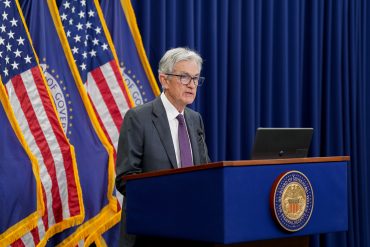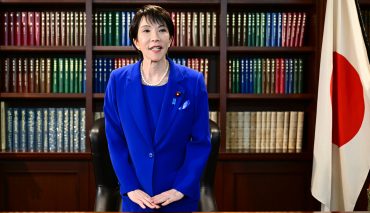
- Federal Reserve
- Interest Rates
- Stock Market
Federal Reserve Unanimously Halts Rate Hikes Amid Cooling Inflation
5 minute read

Federal Reserve’s interest rate pause signals confidence in inflation control while maintaining policy flexibility
Key Takeaways
- Federal Reserve pauses rate hikes unanimously for the first time in months as inflation shows signs of slowing, marking a strategic shift in monetary policy.
- First dissent since 1993 as two FOMC members voted for a quarter-point rate cut, signaling growing internal pressure to ease monetary policy.
- Tech sector maintains stability with borrowing costs unchanged while $5.75 trillion in global IT spending projected for 2025, representing 9.3% growth driven by AI infrastructure investments.
Introduction
The Federal Reserve’s unanimous decision to pause interest rate increases signals a pivotal shift in monetary strategy as economic conditions evolve. This marks the first pause in months of steady rate hikes, reflecting growing confidence in the current economic trajectory.
The central bank’s policymakers demonstrate renewed optimism about inflation trends while maintaining vigilance over economic stability. This strategic pause allows officials to assess the broader impact of earlier rate hikes on borrowing costs and economic activity.
Key Developments
According to The Financial Times, this decision represents a departure from the steady increases seen over the past year. Federal Reserve Chair Jerome Powell emphasizes the importance of closely monitoring economic data for future policy adjustments.
The FOMC meeting summary highlights ongoing concerns about tight labor market conditions. Analysts note that wage growth continues contributing to inflationary pressure, though recent trends indicate gradual moderation in wage increases.
Powell warns that inflation remains above the Fed’s 2% target, necessitating continued vigilance. The Fed chair reinforces the central bank’s commitment to achieving sustainable economic growth while remaining prepared to tighten further if necessary.
Market Impact
Financial markets reacted positively to the Fed’s decision, with stock indices posting modest gains. The pause provides relief to investors who have been navigating elevated borrowing costs and economic uncertainty.
The steady-rate decision provides stability for financial markets while maintaining elevated borrowing costs across sectors. Tech companies continue facing higher financing expenses compared to the ultra-low-rate environment of previous years, potentially moderating aggressive expansion plans.
Economists assign a 63% probability to a rate cut at the September meeting, contingent on economic data collected before the next FOMC gathering scheduled for September 16-17. This expectation keeps markets positioned for potential easing later this year.
The technology sector shows resilience with Gartner projecting $5.75 trillion in global IT spending for 2025, marking a 9.3% increase over 2024. This growth reflects continued demand for AI infrastructure and cloud computing services despite current interest rate levels.
Strategic Insights
The Fed’s cautious approach reflects adaptation to changing economic conditions as policymakers balance growth with inflation risks. This strategy allows time to assess the cumulative effects of previous rate increases on economic activity and borrowing patterns.
For technology companies, the unchanged rates create a stable planning environment while borrowing costs remain elevated. Companies may accelerate fundraising activities in anticipation of future rate cuts, particularly for AI and cloud infrastructure investments that drive competitive advantage.
The decision supports continued M&A and IPO activity as investor enthusiasm remains strong for growth-oriented firms. Tech executives gain additional time to plan capital expenditures and strategic initiatives without immediate risk of sharply higher financing costs.
Expert Opinions and Data
Powell states the Fed remains “prepared to tighten further if needed,” reinforcing the central bank’s commitment to price stability. Economists predict the Fed will maintain its cautious stance, prioritizing economic stability amid global uncertainties.
The voting pattern reveals significant internal debate, with two members dissenting for the first time since 1993. Michelle Bowman and Christopher Waller advocated for a quarter-point rate reduction, representing minority opposition to the prevailing consensus.
Oxford Economics’ Nancy Vanden Houten highlights the unusual nature of the two-member dissent, while Pantheon Macroeconomics chief economist Samuel Tombs suggests a potential rate cut by year-end depending on shifting inflation and economic conditions.
Government policy changes add complexity to the economic outlook. Trump’s announcement of 25% tariffs on imports from India creates additional uncertainty that could affect consumer prices and economic growth patterns.
Conclusion
The Federal Reserve’s strategic pause represents a measured response to evolving economic conditions, providing markets with stability while maintaining policy flexibility. This approach demonstrates the central bank’s commitment to data-driven decision making in uncertain times.
Technology companies benefit from this predictable environment, gaining time to position themselves for potential rate cuts while continuing investments in AI and cloud infrastructure. The Fed’s commitment to data-dependent decision-making keeps markets focused on upcoming economic indicators that will shape September’s policy direction.








